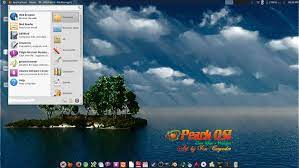The Power of Customizability: Tailoring Your Experience
The Power of Customizability: Tailoring Your Experience
Customizability is a key feature that empowers users to personalise their experience across various platforms and devices. From customising the layout of a website to adjusting settings on a smartphone, the ability to tailor interfaces and functionalities according to individual preferences enhances user satisfaction and efficiency.
One area where customizability shines is in software applications. Many software developers offer users the flexibility to customise the appearance, behaviour, and features of their applications. This allows users to create an environment that suits their unique needs and preferences.
Customisable software often includes options such as changing colour schemes, rearranging interface elements, setting shortcuts, and adjusting privacy settings. By providing these customisation options, developers empower users to take control of their digital experiences and optimise productivity.
Customizability extends beyond software into hardware as well. Tech-savvy individuals often enjoy modifying hardware components such as keyboards, mice, and computer cases to reflect their personal style or improve performance. This practice not only adds a personal touch to devices but also allows users to enhance functionality based on their specific requirements.
Moreover, customizability plays a significant role in web design. Websites that offer customisation options enable users to adjust font sizes, colour schemes, layout preferences, and more. This level of control ensures that visitors can interact with content in a way that is comfortable and visually appealing to them.
In conclusion, customizability empowers users by allowing them to tailor their digital experiences according to their unique preferences and requirements. Whether it’s adjusting software settings, modifying hardware components, or personalising website layouts, the ability to customise enhances user satisfaction and engagement in today’s technology-driven world.
Nine Advantages of Customisation: Enhancing User Experience and Efficiency
- Tailor experiences to individual preferences
- Enhance user satisfaction and engagement
- Optimise productivity by adjusting settings
- Add a personal touch to software applications
- Improve functionality based on specific requirements
- Customise hardware components for style and performance
- Adjust web design elements for comfort and visual appeal
- Empower users to take control of their digital experiences
- Create a more efficient and personalised user environment
Drawbacks of Customisation: Navigating Complexity, Stability, and Security Risks
- Increased complexity for novice users
- Potential for system instability if customisations are not implemented correctly
- Time-consuming to set up and maintain customisations
- Compatibility issues with future software updates
- Risk of security vulnerabilities if customisations compromise system integrity
- Customisations may void warranties on hardware or software
- Over-customisation can lead to cluttered interfaces and decreased usability
Tailor experiences to individual preferences
Customizability offers the invaluable benefit of tailoring experiences to individual preferences. By providing users with the ability to adjust settings, layouts, and features according to their unique tastes and needs, customizability enhances user satisfaction and engagement. Whether it’s choosing a preferred colour scheme, rearranging interface elements, or setting personalised shortcuts, the power to tailor experiences enables individuals to create a digital environment that resonates with their distinct preferences, ultimately leading to a more personalised and enjoyable user experience.
Enhance user satisfaction and engagement
Customizability plays a crucial role in enhancing user satisfaction and engagement by allowing individuals to tailor their digital experiences to meet their specific preferences and needs. When users have the freedom to customise software interfaces, adjust settings, and personalise features, they feel a sense of ownership over their interactions with technology. This level of control not only increases user satisfaction by providing a more personalised experience but also boosts engagement as users are more likely to actively interact with and explore the customised elements of a product or platform.
Optimise productivity by adjusting settings
Customizability offers a powerful advantage in optimising productivity by allowing users to adjust settings according to their specific needs and workflow preferences. By tailoring software interfaces, shortcuts, and features to align with individual working styles, users can streamline their tasks, reduce repetitive actions, and enhance overall efficiency. This level of personalisation not only saves time but also fosters a more productive and comfortable working environment, ultimately leading to improved performance and satisfaction.
Add a personal touch to software applications
Customizability in software applications offers users the opportunity to add a personal touch to their digital experiences. By allowing users to modify the appearance, functionality, and settings of applications according to their preferences, customisation enables individuals to create a software environment that reflects their unique style and workflow. Whether it’s changing colour schemes, rearranging interface elements, or setting personalised shortcuts, the ability to customise software not only enhances user satisfaction but also fosters a sense of ownership and individuality in how users interact with technology.
Improve functionality based on specific requirements
Customizability offers the advantage of enhancing functionality based on specific requirements. By allowing users to tailor software applications, hardware components, or website layouts to meet their individual needs, customisation enables a more efficient and personalised user experience. Whether adjusting settings for accessibility, configuring shortcuts for faster navigation, or modifying design elements for better visual clarity, the ability to customise empowers users to optimise functionality according to their specific preferences and requirements. This level of flexibility not only improves usability but also ensures that users can interact with technology in a way that best suits their unique needs.
Customising hardware components offers users the opportunity to enhance both the style and performance of their devices. By personalising elements such as keyboards, mice, and computer cases, individuals can not only express their unique aesthetic preferences but also improve functionality to better suit their needs. Whether it’s adding colourful keycaps for a pop of personality or upgrading cooling systems for optimal performance, customising hardware components allows users to create a setup that is both visually appealing and tailored to deliver an enhanced user experience.
Adjust web design elements for comfort and visual appeal
Customizability offers users the advantage of adjusting web design elements to enhance both comfort and visual appeal. By allowing individuals to modify aspects such as font sizes, colour schemes, layout preferences, and more, websites can be tailored to suit the specific needs and aesthetics of each user. This level of control ensures that visitors can interact with content in a way that is not only visually pleasing but also comfortable for prolonged periods of browsing, ultimately improving the overall user experience.
Empower users to take control of their digital experiences
Customizability empowers users to take control of their digital experiences by allowing them to tailor software interfaces, hardware configurations, and online environments to suit their individual preferences and needs. This level of personalisation not only enhances user satisfaction but also fosters a sense of ownership and empowerment over how they interact with technology. By giving users the freedom to customise settings, layouts, and features, they can create a digital ecosystem that aligns perfectly with their unique workflow and style, ultimately leading to a more efficient and enjoyable user experience.
Create a more efficient and personalised user environment
Customizability offers the advantage of creating a more efficient and personalised user environment by allowing individuals to tailor their digital experiences according to their specific needs and preferences. Through customisation options in software, hardware, and web design, users can optimise their workflows, enhance productivity, and interact with content in a way that resonates with them personally. This level of personalisation not only increases user satisfaction but also fosters a deeper connection between individuals and the technology they use, ultimately leading to a more seamless and enjoyable user experience.
Increased complexity for novice users
Customizability, while offering a plethora of options for experienced users to tailor their digital experiences, can present a significant challenge for novice users due to increased complexity. The abundance of customization settings and options can overwhelm those who are unfamiliar with the intricacies of software or hardware configuration. Novice users may find it daunting to navigate through menus, settings, and preferences, leading to confusion and frustration. The learning curve associated with customizability can deter beginners from fully utilising the potential benefits of personalisation, highlighting the need for user-friendly interfaces and guidance to help individuals navigate through the complexities of customization effectively.
Potential for system instability if customisations are not implemented correctly
Customizability, while offering users the freedom to tailor their digital experiences, comes with the potential risk of system instability if customisations are not implemented correctly. Making changes to software settings or hardware components without a thorough understanding of their impact can lead to unexpected issues such as crashes, errors, and performance degradation. Users must exercise caution and follow best practices when customising their systems to avoid compromising stability and functionality. It is essential to strike a balance between personalisation and system integrity to ensure a smooth and reliable user experience.
Time-consuming to set up and maintain customisations
One drawback of customizability is that it can be time-consuming to set up and maintain customisations. While the ability to tailor software, hardware, or websites to suit individual preferences is valuable, the process of configuring and adjusting these customisations can require a significant investment of time and effort. Users may need to navigate through various settings, options, and configurations to achieve the desired outcome, which can be a daunting task for those with limited technical expertise. Furthermore, maintaining customisations over time may involve troubleshooting issues, updating settings, and ensuring compatibility with new updates or changes, adding an ongoing layer of complexity to the user experience.
Compatibility issues with future software updates
One significant drawback of customizability is the potential for compatibility issues with future software updates. When users heavily customise their software or hardware, they run the risk of encountering conflicts or malfunctions when new updates are released. Custom modifications may not always align seamlessly with the changes introduced in updates, leading to system instability, performance issues, or even complete breakdowns. This can result in frustration for users who find themselves unable to benefit from the latest features and improvements due to the incompatibility caused by their customisations.
Risk of security vulnerabilities if customisations compromise system integrity
Customizability, while offering users the freedom to tailor their digital experiences, comes with the inherent risk of security vulnerabilities if customisations compromise system integrity. When users make extensive modifications to software or hardware settings beyond recommended parameters, they may inadvertently weaken security measures and expose their systems to potential threats. These vulnerabilities can be exploited by malicious actors to gain unauthorized access, compromise data confidentiality, or disrupt system functionality. Therefore, it is essential for users to exercise caution and strike a balance between personalisation and maintaining robust security protocols to mitigate the risks associated with over-customisation.
Customisations may void warranties on hardware or software
Customisations, while offering users the freedom to personalise their devices and software, can come with a significant drawback: they may void warranties on hardware or software. Making alterations to the original configuration of a product can sometimes lead to unforeseen issues or malfunctions, which manufacturers may not cover under warranty. This limitation poses a risk for users who engage in customisations, as they may find themselves without the protection of warranty support in case of technical problems or failures. It is essential for individuals to weigh the benefits of customising against the potential loss of warranty coverage before making any modifications to their devices or software.
Over-customisation can lead to cluttered interfaces and decreased usability
Over-customisation, when taken to an extreme, can result in cluttered interfaces and reduced usability. While customising software, hardware, or websites can enhance user experience, excessive modifications may lead to confusion and inefficiency. When users have too many options to personalise every aspect of a system, it can overwhelm them and make it challenging to navigate or find essential functions. Striking a balance between customisation and simplicity is crucial to ensure that users can easily interact with the interface without sacrificing usability.










